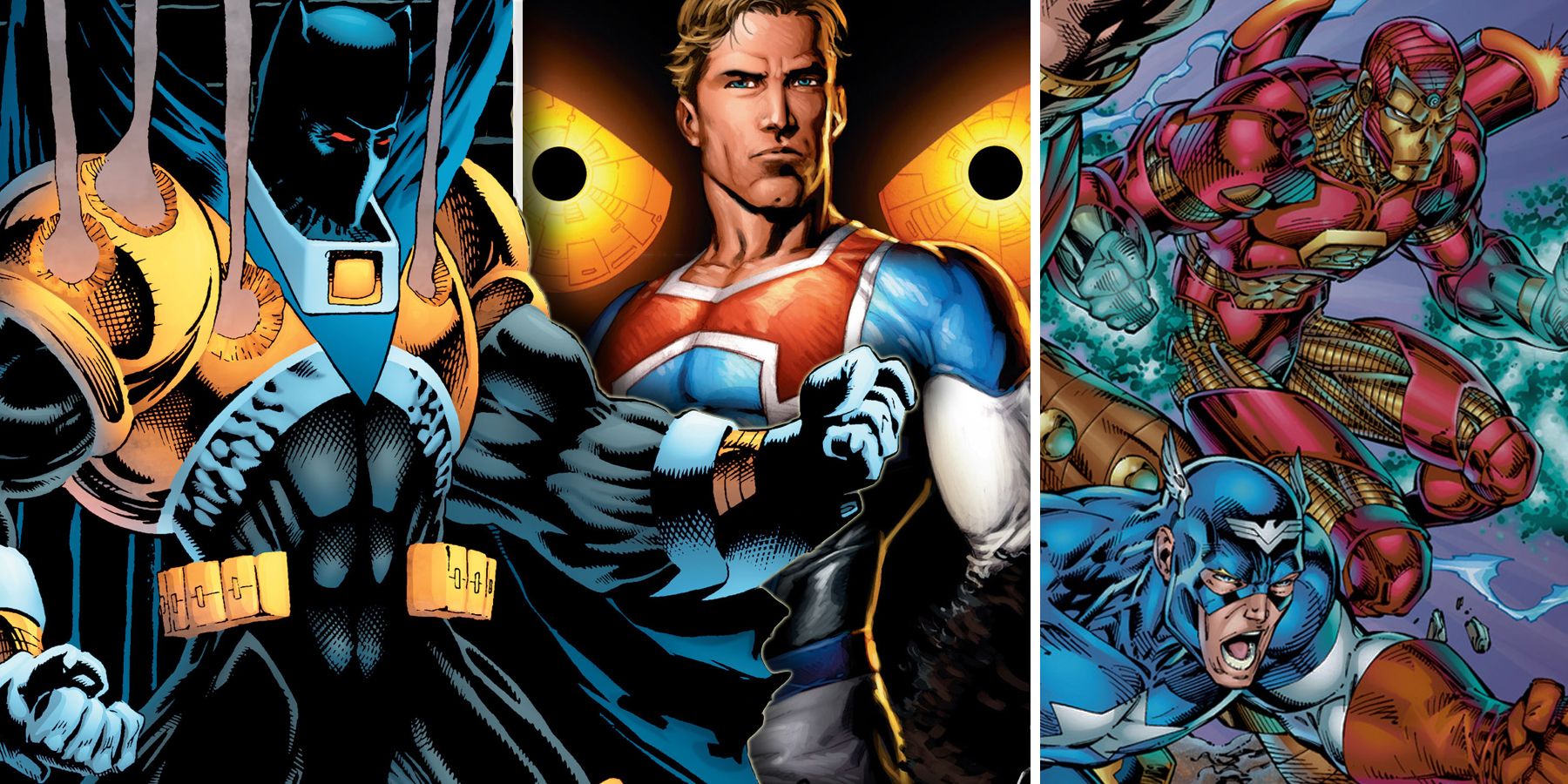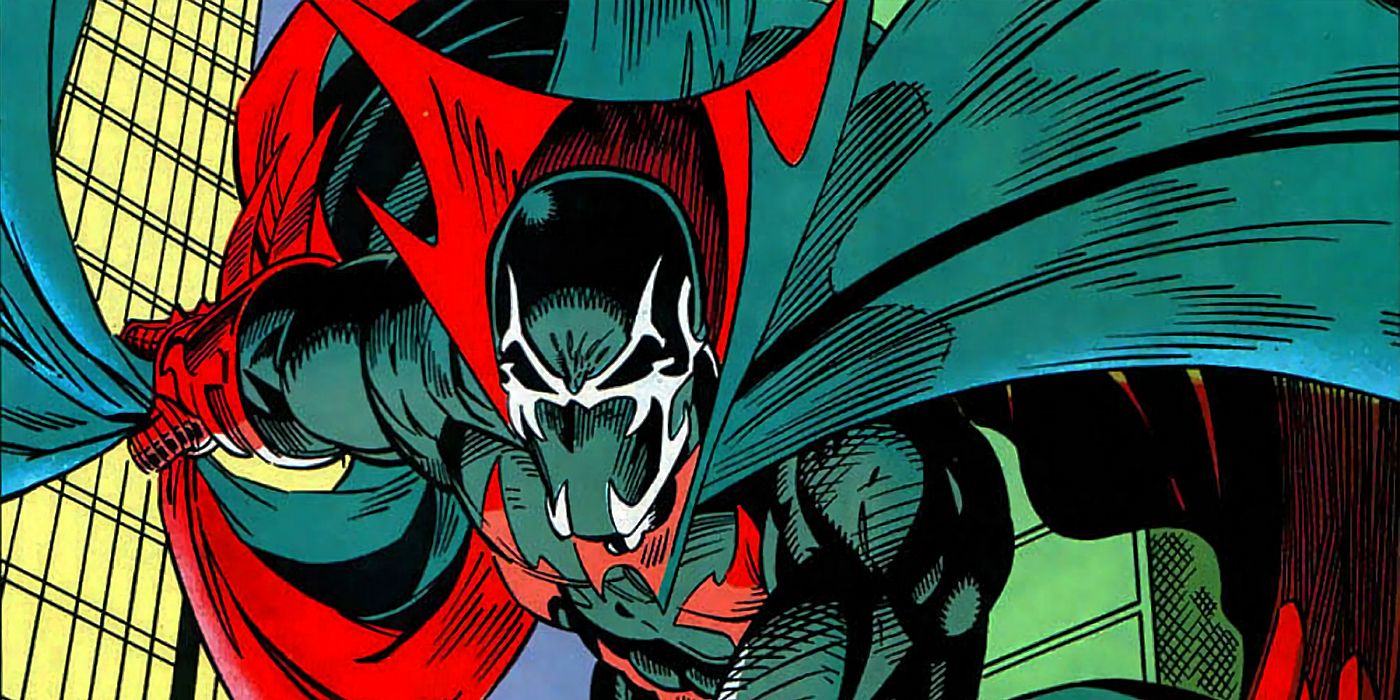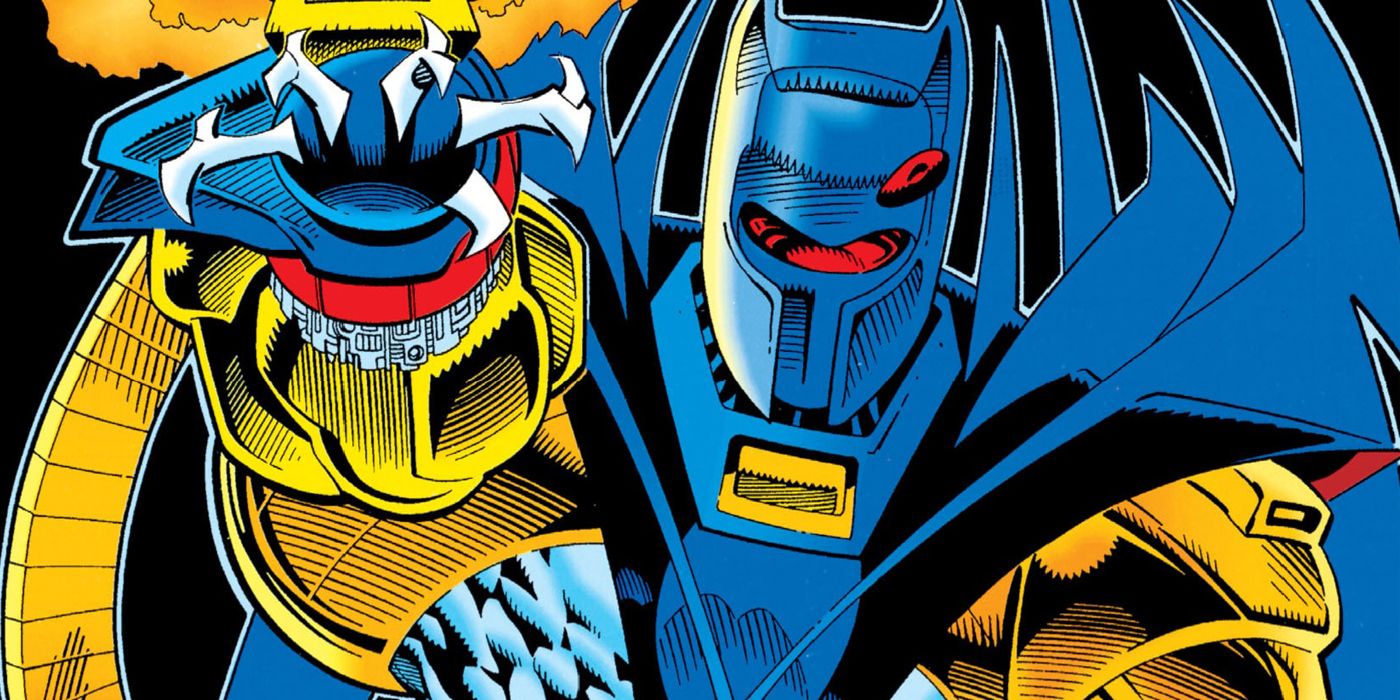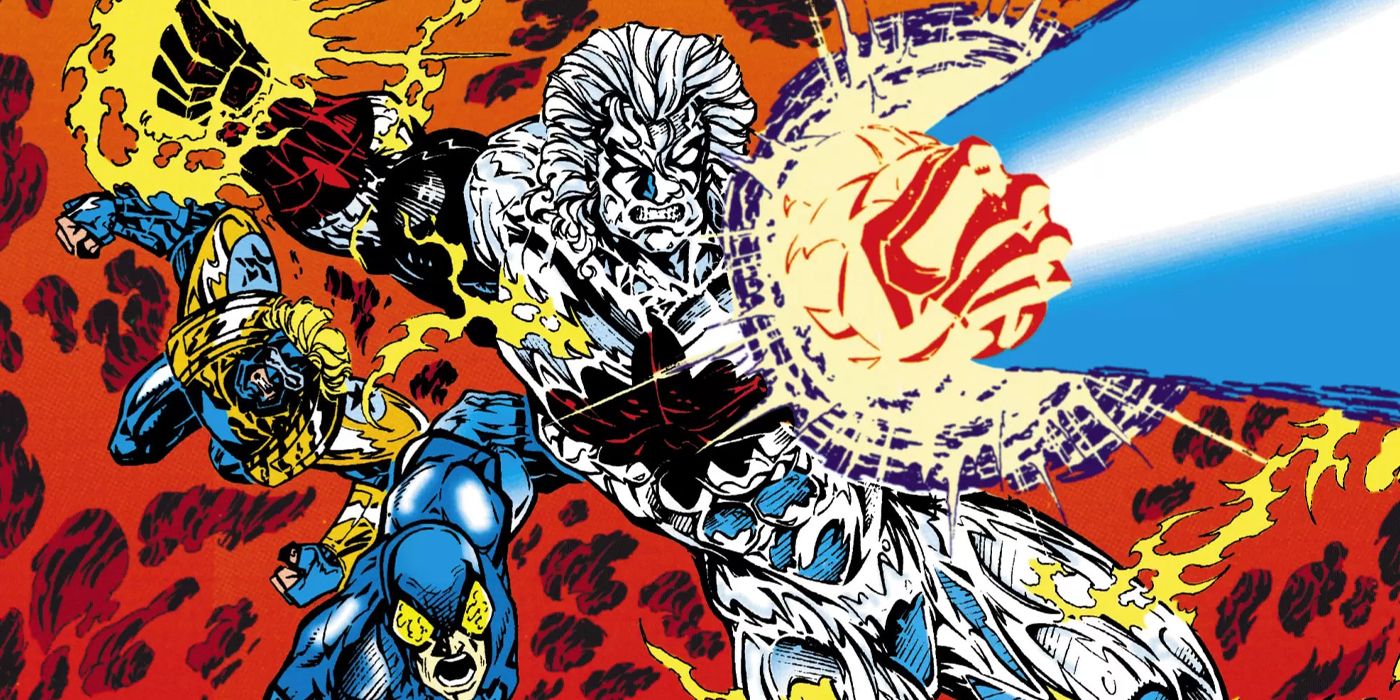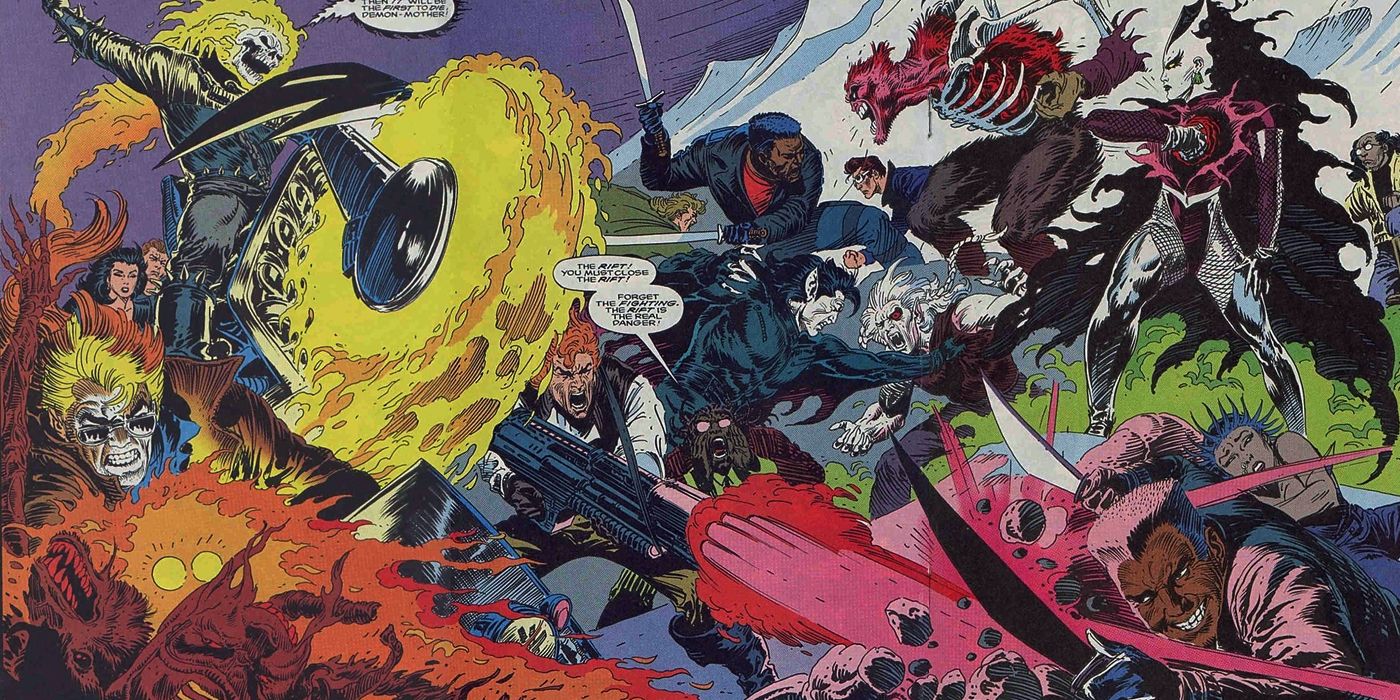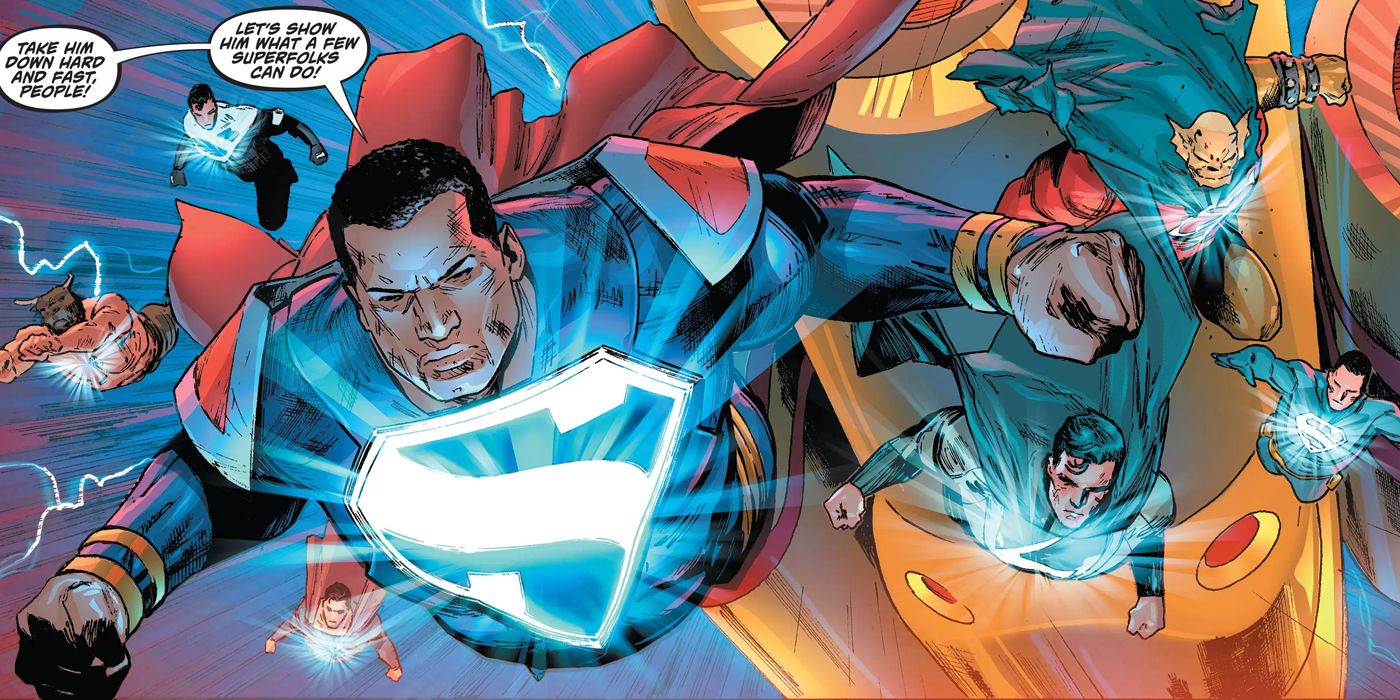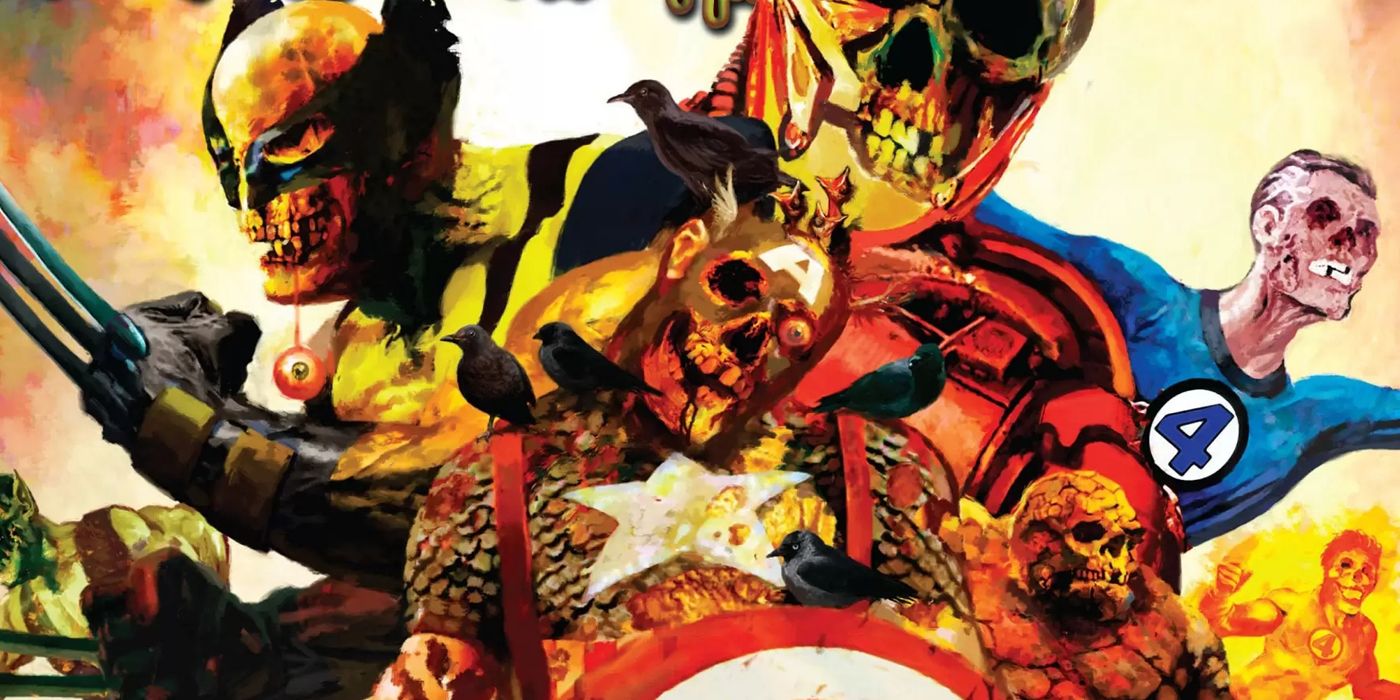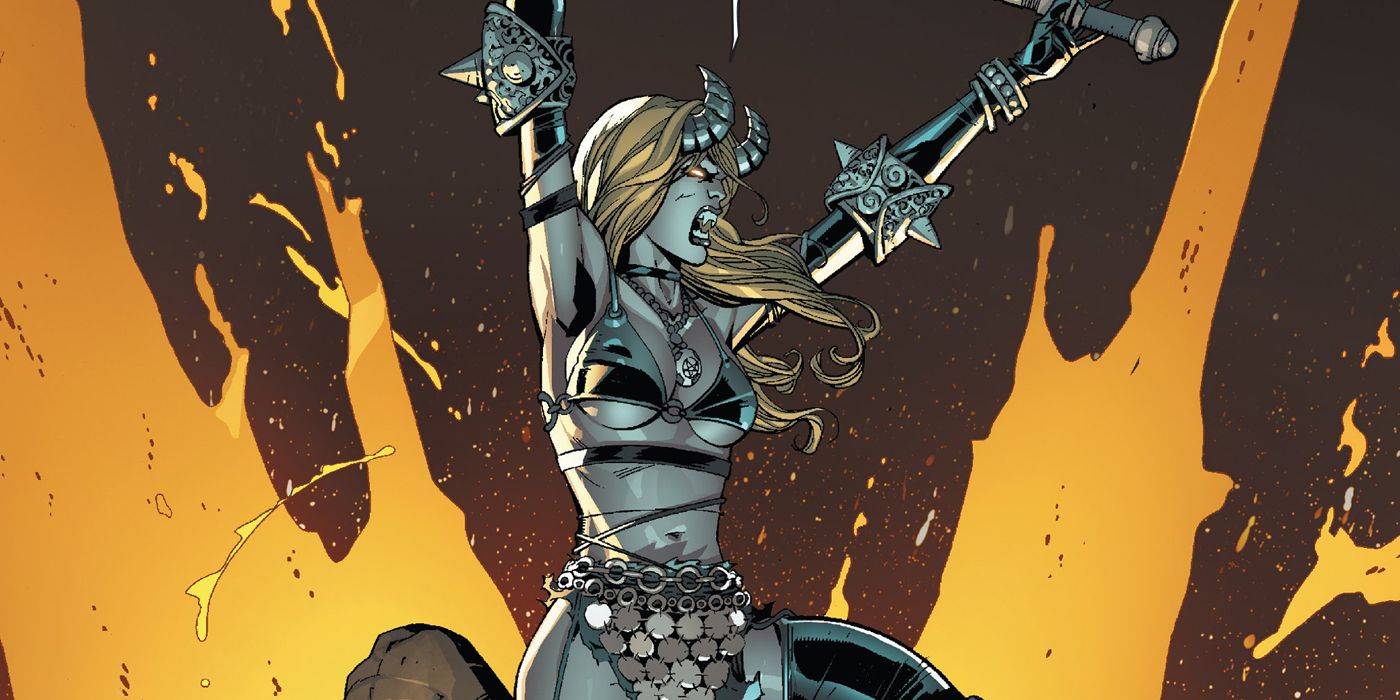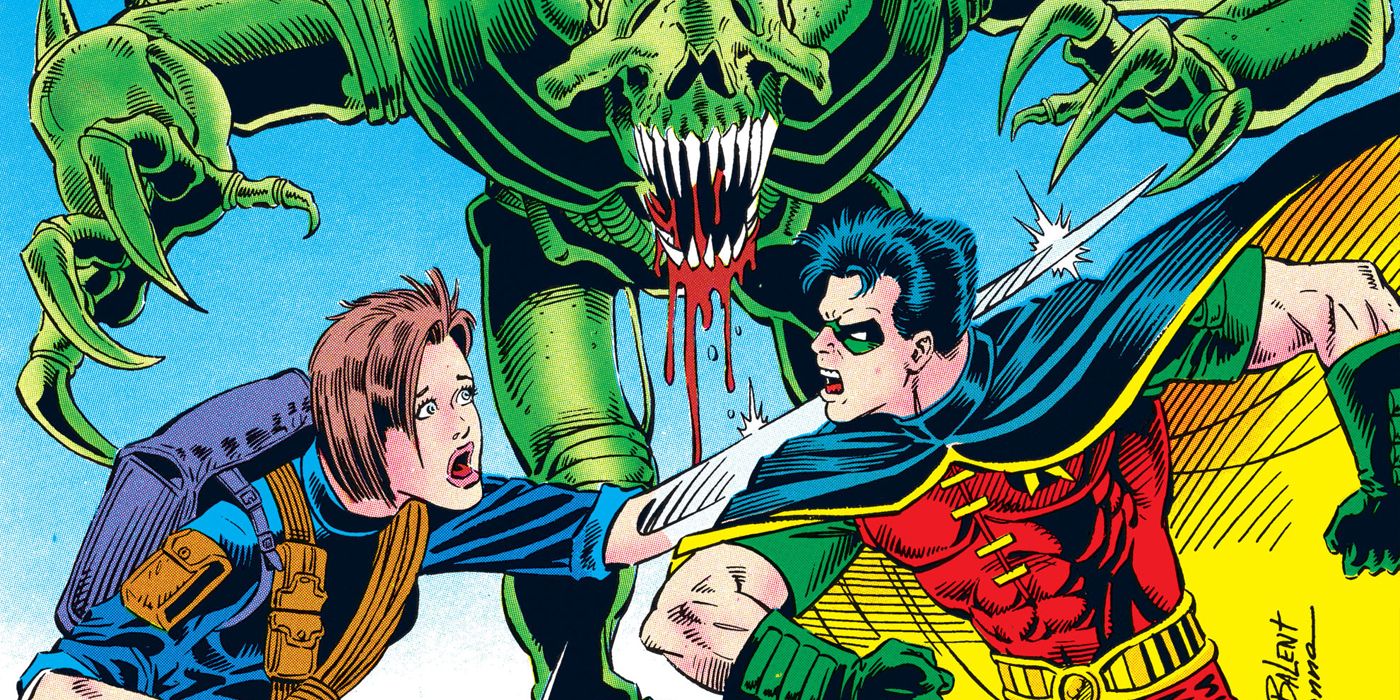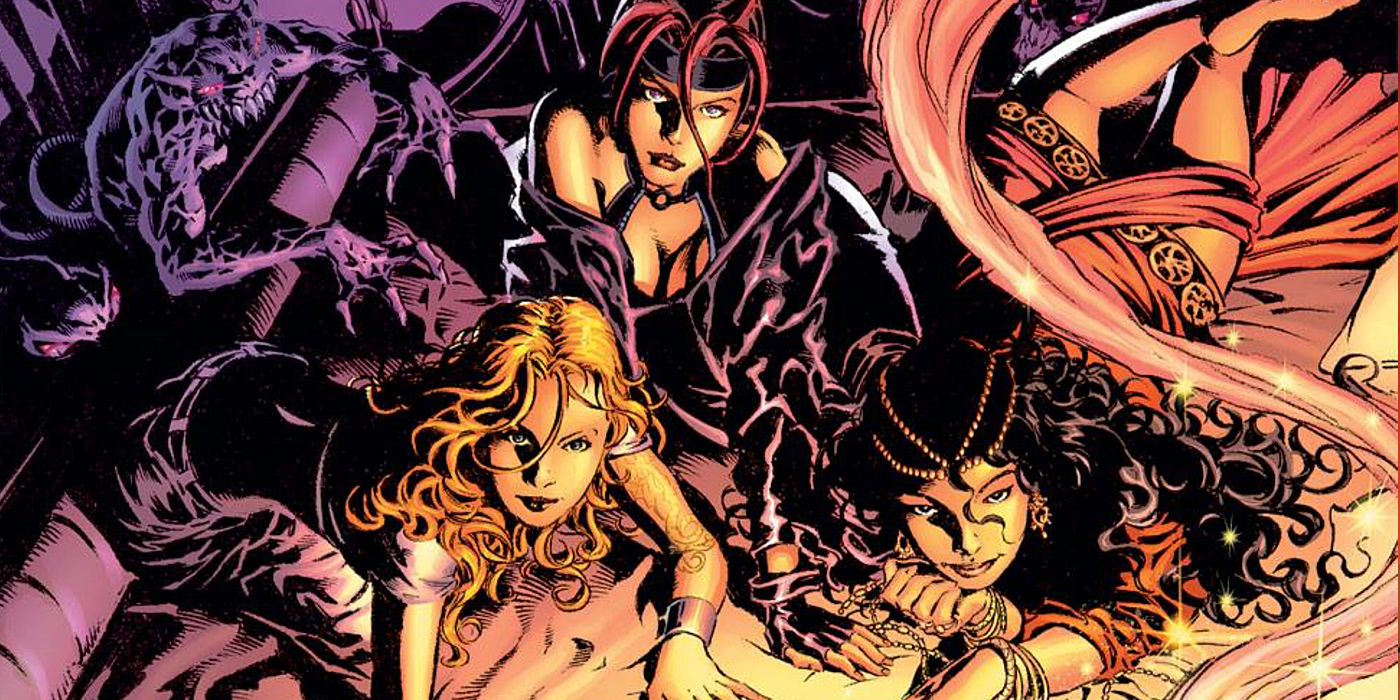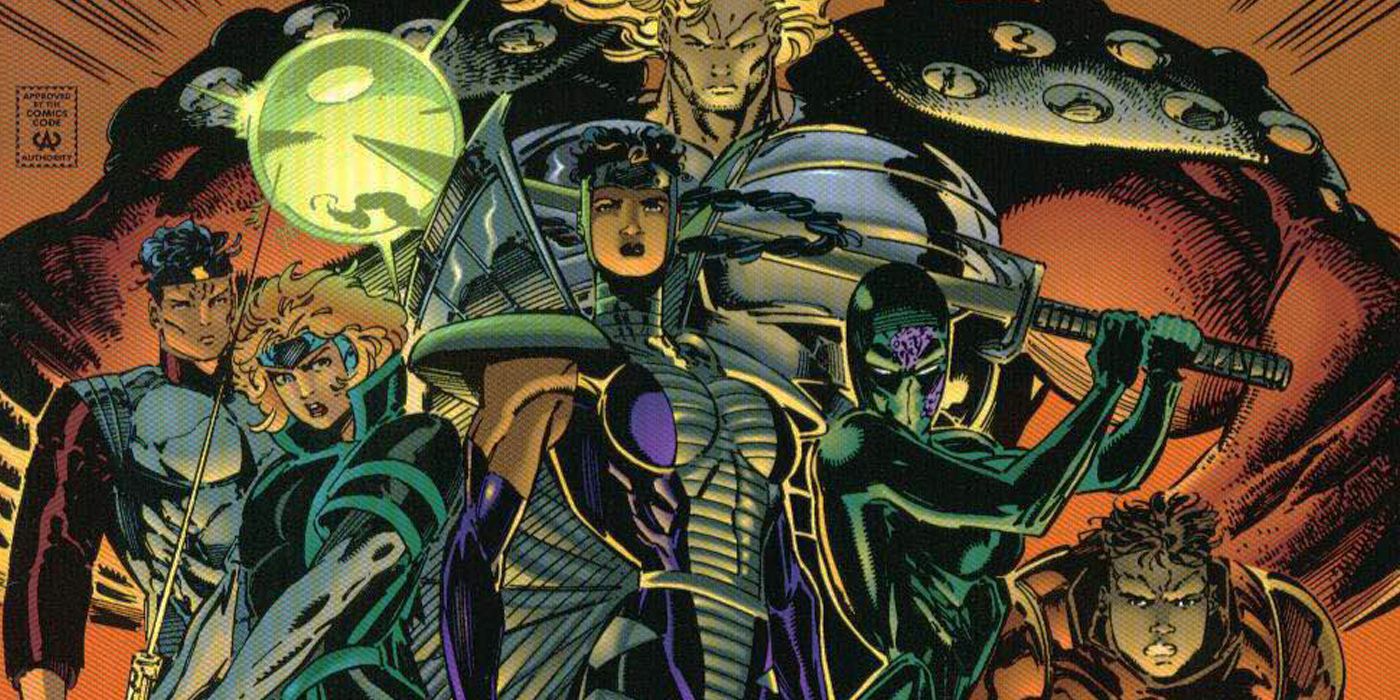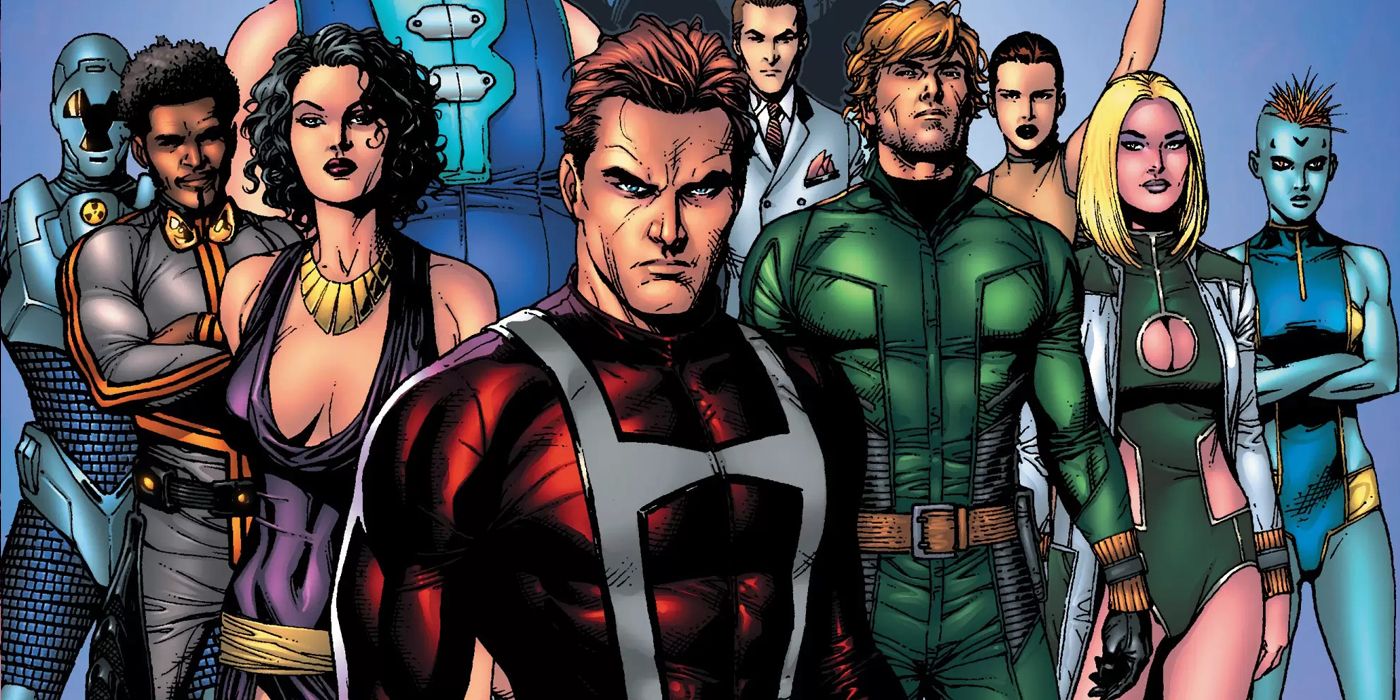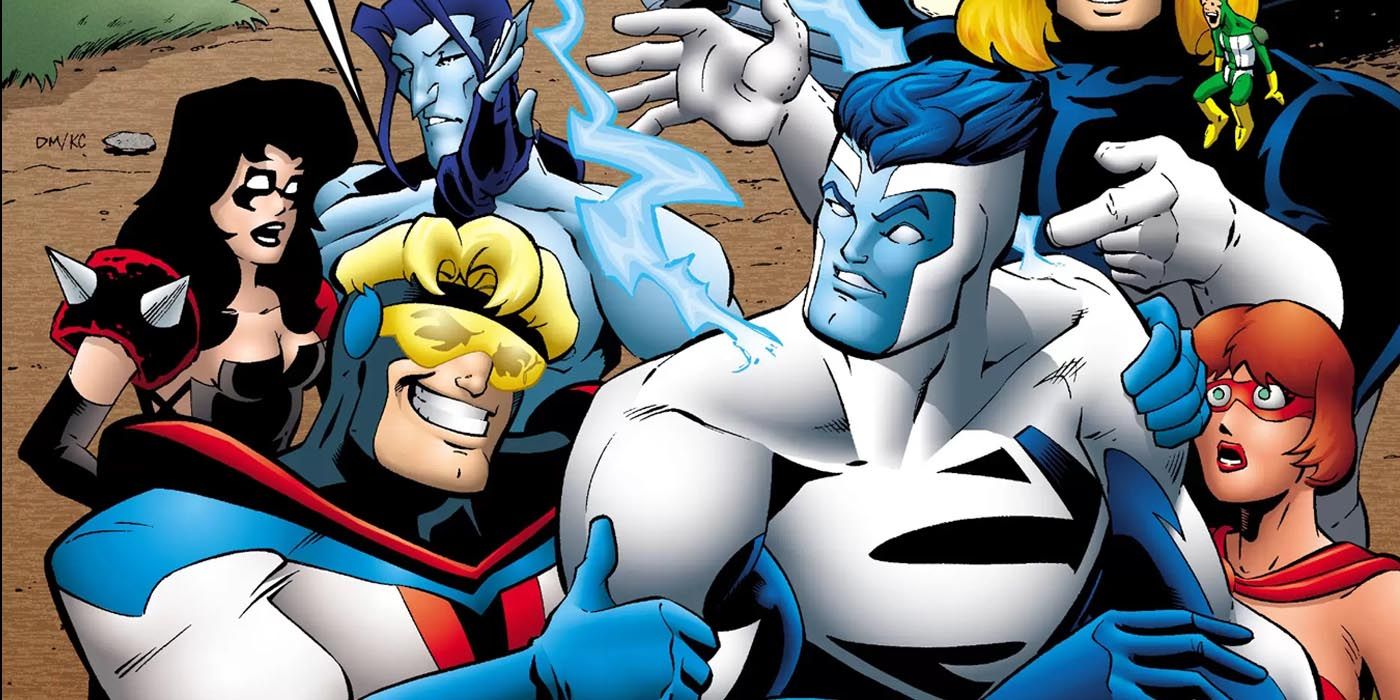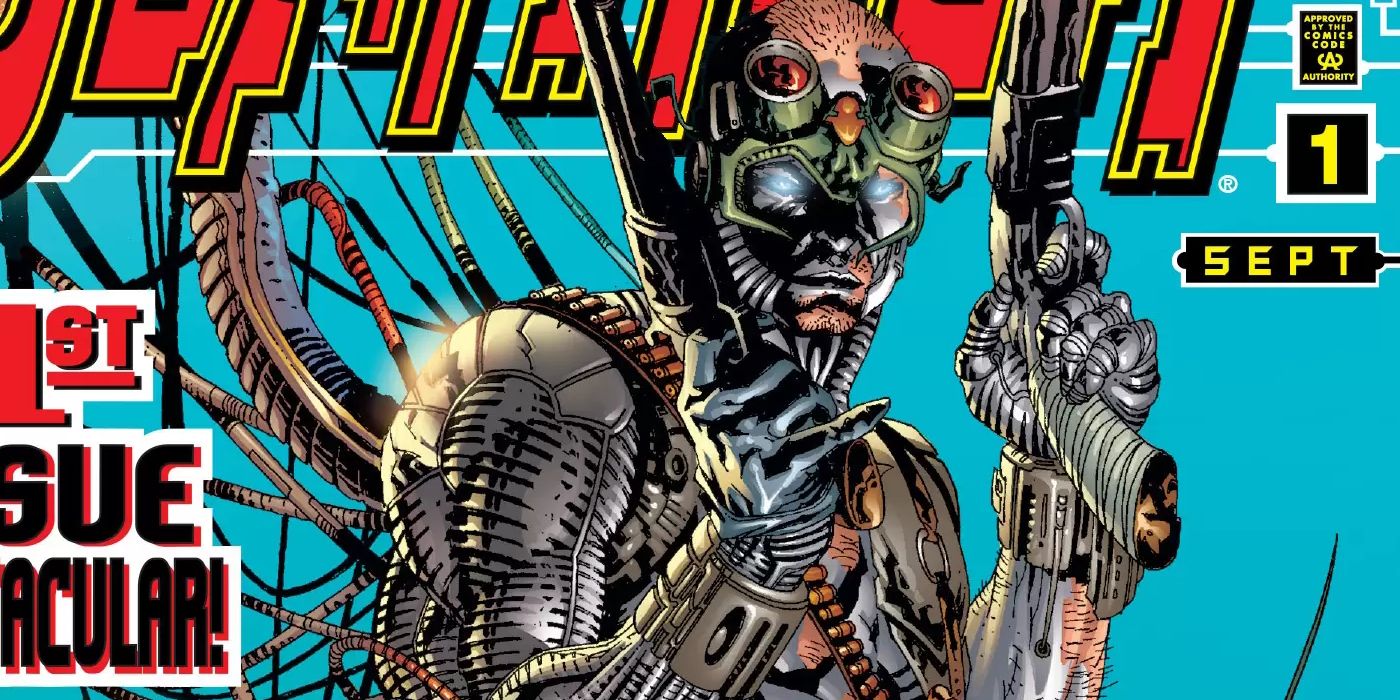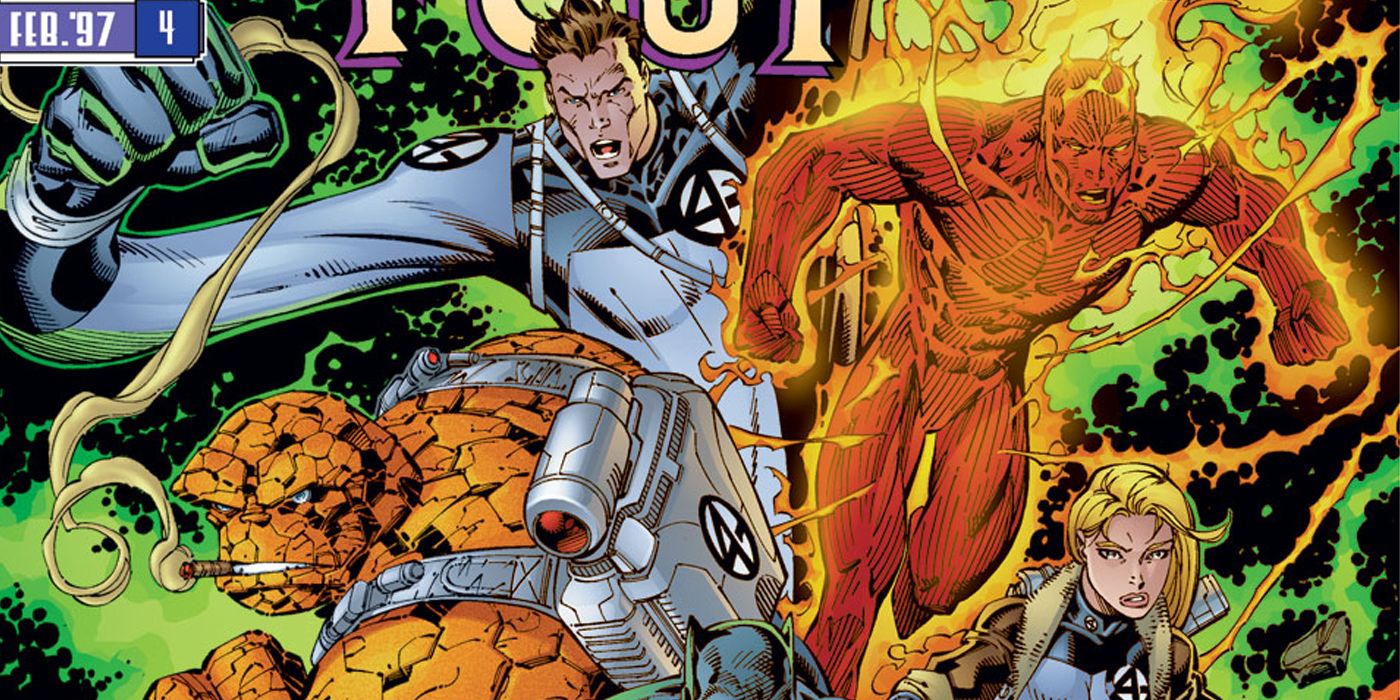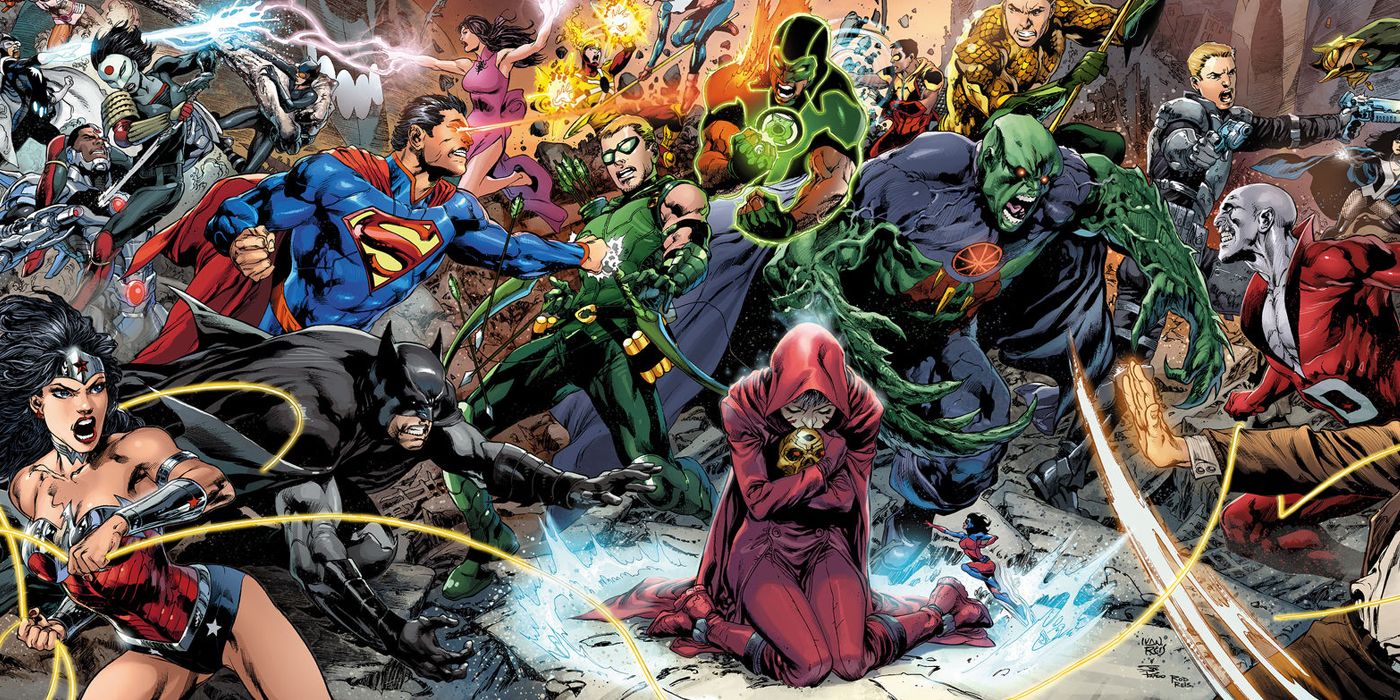In 1992, Image Comics started a comic book revolution. In a field dominated by corporate giants like Marvel Comics and DC Comics, Image proved that creator-owned titles could be chart-topping successes and paved the way for today's thriving independent comics' scene. With superstar creators like Jim Lee, Todd McFarlane and Rob Liefeld, Image's mix of dark antiheroes and extreme action helped define the 1990s. Even with their incomparable legacies, both Marvel and DC found themselves taking cues from Image's success. Long after Image's meteoric rise, both publishers were still stuck responding to some of Image's industry-shaking moves.
RELATED: Spitting Image: 15 Times Image Flagrantly Copied Marvel and DC
Now, CBR looks back at times when Marvel and DC totally copied Image Comics. For this list, we'll be looking at characters, comics and storylines from Marvel and DC that ripped off or were heavily influenced by Image's characters and style. While some of these comics tried to comment on Image's titles, others tried to replicate Image's characters or play off of the publisher's trend-making successes. While Marvel and DC have both acquired the rights to characters once published by Image, we'll be leaving those aside, for the most part, and focusing on times when the Image style was applied to new or existing Marvel and DC characters.
15 NIGHTWATCH
While Nightwatch has spent most of the past two decades in the scrapheap of history, the Marvel hero might be leaping to the big screen soon. Created by Terry Kavanaugh, Derik Yaniger and Alex Saviuk in 1993's Web of Spider-Man #97, Dr. Kevin Trench saw an older version of himself die and pulled Nightwatch's costume off of his own corpse. After becoming the cybernetic hero, Nightwatch played a small role in Spider-Man's adventures for a brief time and starred in his own short-lived series in 1994.
With his shadowy, red-and-black color scheme and an extra-large prehensile cape, Nightwatch bears more than a passing resemblance to Todd McFarlane's iconic supernatural antihero Spawn. According to recent reports, Sony Pictures may be looking to give Nightwatch a movie as part of its expanded Spider-Man franchise. Reportedly, screenwriter Edward Ricourt is working on the project, and Sony wants seminal filmmaker Spike Lee to direct.
14 BATMAN: KNIGHTFALL
In one of DC's most famous '90s epics, Knightfall, the super-strong Bane crippled Batman with a back-breaking blow. Instead of passing the mantle on to an obvious successor like Dick Grayson, Bruce Wayne passed the Batman mantle on to Jean-Paul Valley, who was created by Dennis O'Neil and Joe Quesada in 1992's Batman: Sword of Azrael. Brainwashed and trained to be an assassin for the Sacred Order of Saint Dumas, Valley's brief tenure as Batman was defined by his armored costume, bladed weapons and brutal tactics.
O'Neil, who orchestrated the crossover, later said that Knightfall was meant to show the value of a traditional Batman in an age of dark antiheroes. Valley's over-the-top Batman shares several design elements with Jim Valentino's armored Image hero ShadowHawk, and his violent tendencies mimic those of Image characters like Spawn. As the hero Azrael, Valley eventually went on to star in his own long-running title.
13 EXTREME JUSTICE
In the late 1980s, Keith Giffen, J.M. DeMatteis and Kevin Maguire's fan-favorite Justice League International turned DC's premiere super-team into a lovable group of offbeat heroes. By the mid-1990s, that comedic approach to the Justice League had been abandoned in favor of a more serious approach. In 1995, several of the JLI's heroes joined the more aggressive team, Extreme Justice. For 19 issues, muscle-bound versions of Captain Atom, Blue Beetle, Booster Gold and other heroes pre-emptively dealt with geo-political threats in action-packed tales by writers like Dan Vado and Ivan Velez Jr.
In an era that featured several independent Justice League squads, Extreme Justice was notable for its more pro-active approach to crime-fighting. While JLI went on globe-trotting adventures, this team looked more like Stormwatch, Jim Lee's action-centric Image team of international heroes. Both Stormwatch and Extreme Justice were ultimately ordered to disband by the United Nations.
12 GHOST RIDER AND THE MIDNIGHT SONS
Marvel's Ghost Rider and Todd MacFarlane's Spawn have a lot in common. Both comics star brutal heroes who made deals with the devil, literally, and use their supernatural abilities to save the world. While Ghost Rider was created in 1972, 1990's Ghost Rider #1, by Howard Mackie and Javier Saltares, introduced Danny Ketch, that era's popular Ghost Rider. While that relaunch was successful, Spawn's 1992 debut easily eclipsed it by selling approximately 1.7 million copies.
A few months after Spawn's first appearance, Marvel responded with Midnight Sons, a new imprint starring Ghost Rider, Blade the Vampire Hunter and several other supernatural characters. In titles like Spirits of Vengeance, Morbius: The Living Vampire, Nightstalkers and Doctor Strange, those supernatural heroes battled the kind of hellish threats that Spawn usually dealt with. While the Midnight Sons line folded in 1994, Spawn has continued its largely uninterrupted run for 25 years.
11 THE SUPERMAN SQUAD/SUPERMEN OF THE MULTIVERSE
When Rob Liefeld's Supreme debuted in 1992's Youngblood #3, he was a more violent version of Superman with an ever-changing backstory. As part of a critically-acclaimed revamp of the title in 1996, Alan Moore, Joe Bennett and Keith Giffen introduced the Supremacy, an alternate reality where the hero encountered other alternate versions of himself. Over the course of his critically-acclaimed run, Moore used the Supremacy as a proxy to explore the legacy of Superman, among other things.
In the DC Universe, Grant Morrison introduced two takes on a similar idea with Superman. In 2006's All-Star Superman #6, Morrison and Frank Quitely introduced the Superman Squad, where Superman and his alternate reality analogues protected the multiverse. In 2008's Final Crisis #8, Morrison and Doug Mahnke introduced the Supermen of the Multiverse, another group of alternate reality Supermen that played a key role in the climax of that 2008 crossover.
10 MARVEL ZOMBIES
Even though it wasn't the global phenomenon that it is today, The Walking Dead was one of the comic industry's most buzzworthy titles in the mid-2000s. Along with Zack Snyder's 2004 film, Dawn of the Dead, Robert Kirkman, Tony Moore and Charlie Adlard's Image series was on the forefront of the impending zombie renaissance.
Even though The Walking Dead wasn't a chart-topping title, Marvel hired Kirkman to zombify its heroes with 2005's Marvel Zombies. With art by Sean Phillips, the series fleshed out a horrific alternate reality that was created by Mark Millar and Greg Land in 2005's Ultimate Fantastic Four #21. While a few characters managed to survive, most of Marvel's heroes and villains became flesh-eating monsters in the nihilistic, darkly comedic series. The concept was successful enough to warrant numerous sequels, and even crossed over with the multimedia horror comedy franchise, Army of Darkness.
9 MAGIK'S MAKEOVER
After being created by Len Wein and Dave Cockrum in 1975's Giant-Size X-Men #1, Illyana Rasputin spent a few years sporadically appearing as Colossus' little sister. After an extended stay in the hellish dimension Limbo, she emerged older as the powerful sorceress Magik, joined the New Mutants and eventually died in 1993.
Magik and her evil Darkchylde persona were revived in a 2007 New X-Men storyline and the 2009 miniseries X-Infernus. While Magik historically wore armor or a full bodysuit in Limbo, she wore considerably skimpier outfits after her resurrection. With a combination of her mystical origins and her revealing costume, the new Magik seemed heavily indebted to Marc Silvestri's supernatural heroine Witchblade and the other scantily-clad 'bad girl' characters that thrived at Image in the 1990s and early 2000s. Even though that trend's peak passed years ago, Magik's revealing costumes have become of the character's defining modern visual traits.
8 BLOODLINES
After Rob Liefeld's Youngblood topped sales charts in 1992, a curious number of new comic books and stories had the word "blood" in their titles. One of those stories was the 1993 DC crossover, "Bloodlines." Over the course of that story, DC's heroes fought against the Bloodlines Parasites, grotesque, ancient aliens who drank humans' spinal fluid. While the Parasites' victims died, a handful gained super-powers and became known as New Bloods.
Several aspects of "Bloodlines" referenced Jim Lee's blockbuster Image superhero title WildC.A.T.s. The Bloodlines Parasites didn’t look too different from the Daemonites, the monstrous ancient aliens who menaced Image's Covert Action Teams. Some of the New Bloods, like the color-changing Loose Cannon and the sword-armed Razorsharp, had looks or abilities that were almost identical to WildC.A.Ts like the super-strong Maul or sharp-clawed Warblade. With the exception of Hitman's Tommy Monaghan, none of the New Bloods really left a lasting impression.
7 DOCTOR STRANGE'S MARVEL WITCHES
In 2001, Marvel was set to bring several minor mystical heroines together in a new series, The Way of the Witches. In that title by Bronwyn Carlton and Mike Deodato, the sorceresses Jennifer Kale, Topaz and Satana would have worked together under the direction of the Sorcerer Supreme, Doctor Strange. After years of setbacks and delays, the title was released as the miniseries Witches, by Deodato, Will Conrad and new writer Brian Walsh. When Strange betrayed that same group, the team stood against him together and vowed to protect the world from supernatural threats.
Although Witches was heavily influenced by supernatural TV dramas like Charmed and Buffy the Vampire Slayer, several aspects of the title drew on trends that Image's titles helped popularize. With a mix of midriff-bearing heroes, demonic foes and supernatural action, Witches adhered to several tropes that were hallmarks of 'bad girl' comics like Witchblade.
6 SOVEREIGN SEVEN
In the mid-1990s, DC let a few creators introduce partially or fully creator-owned characters in the DC Universe. Starting in 1995, Chris Claremont's Sovereign Seven followed a team of those characters. Despite the team's unusual rights arrangement, the group regularly interacted with DC Universe characters like Darkseid or Power Girl. Each member of the team was a young member of a royal family on a different alternate Earth. The Seven starred in their own title for 36 issues, most of which were drawn by Dwayne Turner or Ron Lim.
While the title featured the classic hallmarks of Claremont's writing, the Seven were all influenced by Image's overall aesthetic. The characters' histories were vaguely reminiscent of WildC.A.T.s' ancient alien races, and the book featured twists on superhero stereotypes. In the moderately successful series, Reflex, the team's most physically large character was a super-speedster and the telepath, Network, had trouble processing language.
5 SUPREME POWER
Although it's largely forgotten now, Rising Stars was celebrated as a modern classic in the early 2000s. Created by J. Michael Straczynski and published through Image's Top Cow Productions imprint, the comic followed the Specials, a group of 113 people who were born with super-powers after a mysterious light appeared in the sky. While the book spawned several spin-offs, the main series followed the Specials and their influence on society as they grew into adulthood over 24 issues.
In 2003, Marvel rebooted the Squadron Supreme, a team of alternate reality superheroes-turned-tyrants, with Straczynski and Gary Frank's Supreme Power. The mature readers series focused on Hyperion, a Superman analogue, as he grew from adolescence into adulthood before widening its focus to include other super-powered characters. Both titles featured subplots involving super-powered serial killers, spawned multiple spin-off miniseries and offered a darker take on heroes than traditional superhero comics.
4 YOUNG HEROES IN LOVE
While some of Image's early titles were almost comically grim, Jim Lee, Brandon Choi and J. Scott Campbell's Gen 13 found success by injecting some hallmarks of teen comedy into the group's adventures. Largely on the strength of its dynamic art team, the scandalous superhero soap opera spawned several spin-offs and a domestically-unreleased animated film during its peak in the mid-1990s.
While Gen 13 couldn't sustain its early success, several later titles tried to improve upon its blockbuster formula. Starting in 1997, one of those comics was DC's Young Heroes in Love. Over 18 issues, Dan Raspler and Dev Madan focused more on the various romantic entanglements of their characters than on battling evil. Despite a guest appearance from Superman and involvement in the 1998 crossover "DC One Million," the series never really caught on with readers, although it remains a minor cult favorite today.
3 DEATHLOK
In the 1970s, Doug Moench and Rich Butler's Deathlok was an undead cybernetic soldier in the post-apocalyptic future of 1990. After another version of the character was a moderate success starting in the actual 1990, S.H.I.E.L.D. agent Jack Truman became the new Deathlok in 1999. Created by Joe Casey and José Ladrönn in 1998's Cable #58, Truman was given cybernetic upgrades to battle the Red Skull and starred in a short-lived series by Casey and Leonardo Manco.
While the previous Deathloks looked like robo-zombies in red jumpsuits, Truman's Deathlok was an almost-gruesome combination of man and machine. With a complex design that would fit in with many Image titles, this Deathlok looked like a cross between Jim Lee's ex-assassin Deathblow and Marc Silvestri's robo-heroes Cyberforce. In his series' surprisingly dark finale, Truman traded minds with his old rival Larry Young, and trapped his former colleague in his mechanical shell.
2 MARVEL'S HEROES REBORN
After three decades of uninterrupted storytelling, the Marvel Universe went through its first reality-shaking reboot, Heroes Reborn, in 1996. In the wake of the "Onlsaught" crossover, some of Marvel's core heroes were transported to a pocket dimension where they were completely re-imagined for the 1990s. Image co-founders Jim Lee, Rob Liefeld and Whilce Portacio returned to Marvel and relaunched Iron Man, Captain America, Avengers and Fantastic Four to give those then-fading titles a major spotlight.
While this controversial relaunch drew heavy criticism, it was a commercial smash that introduced these classic characters to a new generation. While the fundamental cores of the characters remained intact, the world of Heroes Reborn was filled with the distinctive art styles, dynamic action and shadowy government groups that populated Image's comics. After a year, the Heroes Reborn characters even crossed over with Jim Lee's WildStorm characters before returning to the main Marvel Universe.
1 DC'S NEW 52
While DC is no stranger to universe-wide reboots, the publisher's New 52 reboot took some major cues from Image's 1990s aesthetic. The 2011 effort saw every comic in the DC Universe relaunched with a new first issue and younger versions of famous heroes. As DC's Co-Publisher, Image founder Jim Lee helped orchestrate the relaunch, redesigned numerous characters in his distinctive style and drew the line's flagship title, Justice League. The relaunch also brought Lee's WildStorm characters and concepts, like WildC.A.T.s' Grifter and the influential paramilitary group Team 7 into the DC Universe.
Thanks to work from Lee, Rob Liefeld and several other Image mainstays, the rejuvenated DC Universe had the same dark, action-centric tone that once defined Image titles. While this drew criticism from some longtime fans, the New 52 was a sales juggernaut that reignited interest in DC's line and set the stage for DC's well-received ongoing Rebirth.
Keep it locked to CBR for all the latest in comics and pop culture news. Let us know what your favorite Image imitators are in the comments!

